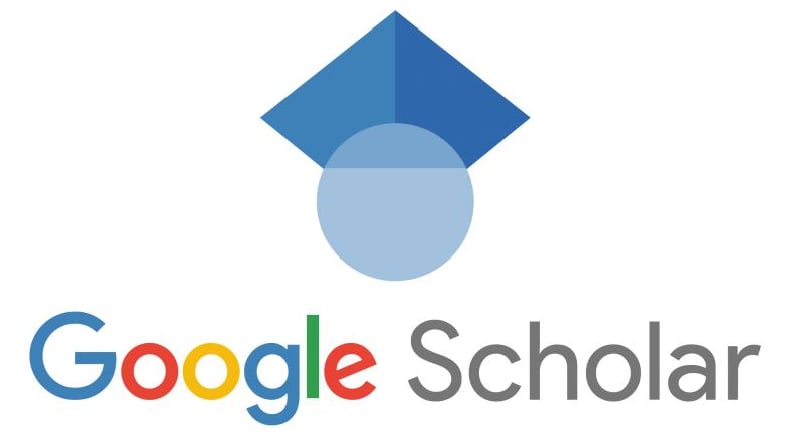The Use of Technology in Learning Arabic Langugage in Higher Education: an Overview
Keywords:
Arabic, digital era, technology, learning methodsAbstract
This paper contains an overview of learning Arabic in universities in the digital era. The points discussed are the use of technology in learning Arabic, the problem of learning methods and the assessment of learning outcomes. Technology of information is improving more and more sophisticated in line with the developing era. Smart learning is augmented with digital, context-aware, and adaptable technologies to encourage students to learn better and faster. To ensure that digital learning is successful and that implementation is efficient, it is critical that the dimensions of digital learning are arranged correctly. In this context, Arabic must be understood as an important part of the component in the planned effort to form an Islamic education. The existence of Arabic which in the understanding of education science is a tool for text investigation should be placed in the right position.
Key words: Arabic, digital era, technology, learning methods
Downloads
References
REFERENCE
Ahmadi, Mohammad Reza. “The Use of Technology in English Language Learning: A Literature Review.” International Journal of Research in English Education 3, no. 2 (2018): 115–125.
Albantani, Azkia Muharom. “Social Media as Alternative Media for Arabic Teaching in Digital Era.” Alsinatuna 4, no. 2 (2019): 148.
Alkhammash, Eman H. “Introducing Smart Learning Framework in the Digital World : Towards the Enhancement of Technology-Driven Innovation of Arabic Smart Learning” 22, no. 11 (2022): 331–337.
Arifin, Zainul, Suci Ramadhanti Febriani, Hendri Yahya Saputra, and Anasruddin Anasruddin. “Arabic Learning in the Digital Era: Approach in Online System.” Lughawiyah: Journal of Arabic Education and Linguistics 3, no. 1 (2021): 73.
Biletska, Iryna O., Alla F. Paladieva, Halyna D. Avchinnikova, and Yuliia Yu. Kazak. “Use of Modern Technologies By Foreign Language Teachers: Developing Digital Skills.” Linguistics and Culture Review 5, no. S2 (2021): 16–27.
Caton, Amy, Danita Bradshaw-Ward, Kinshuk, and Wilhelmina Savenye. “Future Directions for Digital Literacy Fluency Using Cognitive Flexibility Research: A Review of Selected Digital Literacy Paradigms and Theoretical Frameworks.” Journal of Learning for Development 9, no. 3 (2022): 381–393.
Erwin, Kelli, and Shereeza Mohammed. “Digital Literacy Skills Instruction and Increased Skills Proficiency.” International Journal of Technology in Education and Science 6, no. 2 (2022): 323–332.
Ilmiani, Aulia Mustika, and Ahmadi Ahmadi. “The Existence of Arabic Learning in Universities amid the COVID-19 Outbreak: Opportunities and Challenges.” Al-Lisan 6, no. 2 (2021): 179–196.
Khan, Nasreen, Abdullah Sarwar, Tan Booi Chen, and Shereen Khan. “Connecting Digital Literacy in Higher Education to the 21st Century Workforce.” Knowledge Management and E-Learning 14, no. 1 (2022): 46–61.
Mabruri, and Hamzah. “Loghat Arabi : Jurnal Bahasa Arab & Pendidikan Bahasa Arab The Urgency of Using Internet-Based Arabic Learning Media in Online Learning in the Global Pandemic Era Loghat Arabi : Jurnal Bahasa Arab & Pendidikan Bahasa Arab.” Jurnal Bahasa Arab & Pendidikan Bahasa Arab P-ISSN: 1, no. 2 (2020): 1–10.
Mansor, Noor Rohana, Rosdi Zakaria, Roswati Abd Rashid, Sharipah Nur Mursalina Syed Azmy, Mazlina Ahmad, Badruel Hairiel Abd Rahim, and Ruslimi Zakaria. “A Preliminary Survey of Language Learning in Digital Age: Higher Thinking Order Skills and Technology Used.” Journal of Physics: Conference Series 1793, no. 1 (2021).
Meriem Ouahidi, L. “Constraints on Developing Digital Literacy Skills in Higher Education.” International Journal of Linguistics, Literature and Translation (IJLLT) 3, no. 2 (2020): 197–205. www.ijllt.org.
Rini, Rini, Arif Mustofa, and Rahadian Kurniawan. “Transformation Of Arabic Learning From Classical Model To Digital Model.” Ijaz Arabi Journal of Arabic Learning 5, no. 3 (2022): 892–902.
Ritonga, Mahyudin, Sobhan Sobhan, Bambang Bambang, and Safi Khadidja. “Utilizing Technology to Improve the Quality of Learning in Indonesia: Challenges and Consequences for Arabic Teachers.” Arabiyat : Jurnal Pendidikan Bahasa Arab dan Kebahasaaraban 9, no. 1 (2022): 56–68.
Rosak-Szyrocka, Joanna, Justyna Zywiolek, Andrzej Zaborski, Subrata Chowdhury, and Yu Chen Hu. “Digitalization of Higher Education Around the Globe During Covid-19.” IEEE Access 10 (2022): 59782–59791.
Shadiev, Rustam, and Mengke Yang. “Review of Studies on Technology-Enhanced Language Learning and Teaching.” Sustainability (Switzerland) 12, no. 2 (2020).
Ürün, Mehmet Fatih. “Integration of Technology into Language Teaching: A Comparative Review Study.” Journal of Language Teaching and Research 7, no. 1 (2016): 76–87.
Yustika, Gaung Perwira, and Sri Iswati. “Digital Literacy in Formal Online Education: A Short Review.” Dinamika Pendidikan 15, no. 1 (2020): 66–76.
Zabun, Engin. “An Investigation of the Relationship between Digital Literacy of Social Studies Teachers and Their Roles and Competencies in Distance Online Education.” International Journal of Curriculum and Instruction 14, no. 3 (2022): 2093–2114.
Zheltukhina, Marina R., Natalia N. Kislitsyna, Evgeny G. Panov, Anastasia Atabekova, Tatyana Shoustikova, and Nina I. Kryukova. “Language Learning and Technology: A Conceptual Analysis of the Role Assigned to Technology.” Online Journal of Communication and Media Technologies 13, no. 1 (2023): 1–15.
Zhou, Yalun, and Michael Wei. “Strategies in Technology-Enhanced Language Learning.” Studies in Second Language Learning and Teaching 8, no. 2 Special Issue (2018): 471–495.
Downloads
Published
How to Cite
Issue
Section
License
Copyright (c) 2023 Pauzan Haryono, Bambang Widiatmoko

This work is licensed under a Creative Commons Attribution 4.0 International License.






